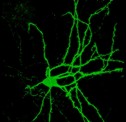 For decades biomedical optics has been touted as an ideal tool for diagnosing, monitoring and/or treating a vast array of health conditions owing to low-cost instrumentation, use of non-ionizing radiation, and incomparable sensitivity. All great characteristics; nonetheless, adoptions of optical devices in the clinic have been few and far-between. One could blame regulations, the high cost of clinical trials, and provider inertia; but these hurdles would be behind us if the optical approaches on health and healthcare costs made more more significant impact. We're not there yet.
For decades biomedical optics has been touted as an ideal tool for diagnosing, monitoring and/or treating a vast array of health conditions owing to low-cost instrumentation, use of non-ionizing radiation, and incomparable sensitivity. All great characteristics; nonetheless, adoptions of optical devices in the clinic have been few and far-between. One could blame regulations, the high cost of clinical trials, and provider inertia; but these hurdles would be behind us if the optical approaches on health and healthcare costs made more more significant impact. We're not there yet.
But we should remain unabashedly optimistic about the future of biomedical optics. Why?
1) Some of the best conventional contrast agents in optics (e.g., quantum dots) have potentially toxic side-effects, and for less efficient but safer agents there are so many different biomarkers that have been targeted in the research stream, that it has been difficult to select a prominent few to follow through costly clinical trials and good manufacturing processes; and
2) Light propagation and absorption in tissue is complex, making it difficult for optical measurements to be reproducible from patient-to-patient, and comparable from system-to-system.
We will face future hurdles. But there has also been a number of major advances made in biomedical optics that are breaking down the current barriers:
1) The great efforts being made to develop safer, brighter, and more distinct contrast agents
2) The handful of groups that have acquired funding for, and are in the process of, pushing the first set of biomarker-targeted imaging agents into clinical trials
3) The burgeoning interest in making optical imaging more quantitative, in terms of light propagation modeling, but also with respect to imaging agent delivery modeling; and
4) The rapid immergence of novel approaches capable of exploring health and disease without requiring exogenous contrast agents.
With all of these advances being highlighted at the OSA Biomed 2014, and with 9 of our 30 invited speakers being directly involved in clinical studies, please make sure to join us in Miami, April 26-30 to usher in a new era of clinical translation in biomedical optics.
See you there!
Image credit: National Institutes of Health, Margaret I. Davis
